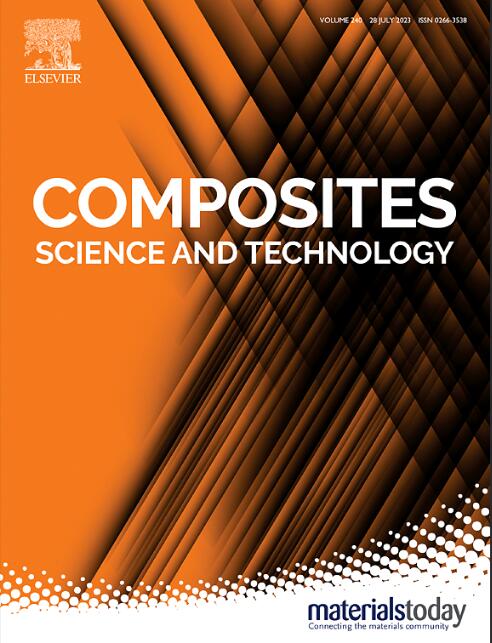Notch nonlinearities in pseudo-ductile composite laminates: A novel LE/HE sublaminate design
IF 9.8
1区 材料科学
Q1 MATERIALS SCIENCE, COMPOSITES
引用次数: 0
Abstract
Attempts to achieve pseudo-ductility in quasi-isotropic (QI) thin-ply laminates have traditionally relied on stacking [LE/HE/LE] sublaminates, with LE representing low-elongation and HE high-elongation. However, the increase in effective ply thickness led to reduced unnotched strength. Alternatively, in this study, we define a new sublaminate configuration ([LE/HE]) to minimise the increase in ply-block thickness and compare experimentally such hybrid QI thin-ply laminate with a conventional thin-ply QI () laminate. The hybrid specimens demonstrated consistent but modest pseudo-ductile properties (ultimate-to-pseudo-yield strength ratio, =1.1; pseudo-ductile strain, =0.3%). Using Digital Image Correlation (DIC) and advanced dark-field X-ray imaging, we detected earlier and more pronounced deviations from linear strain fields in hybrids compared to the reference laminates. The hybrid laminates showed an 11.7% reduction in unnotched strength but a 4% increase in notched strength in Open-Hole Tension (OHT) specimens. Thus, the proposed hybridisation introduces new damage mechanisms facilitating stress redistribution, thereby recovering more nominal strength with a reduced impact on the unnotched strength. Our findings suggest viable approaches to integrate pseudo-ductility into thin-ply laminates whilst preserving the inherent advantages of ply thinness.

伪延性复合材料层合板的缺口非线性:一种新的LE/HE亚层合板设计
在准各向同性(QI)薄层板中实现伪延展性的尝试传统上依赖于堆叠[LE/HE/LE]亚层板,其中LE代表低伸长率,HE代表高伸长率。然而,有效厚度的增加导致无缺口强度的降低。或者,在本研究中,我们定义了一种新的亚层压结构([LE/HE]),以尽量减少胶合板厚度的增加,并通过实验将这种混合QI薄层复合材料与传统的薄层QI (Π/4)复合材料进行比较。混杂试样表现出一致但适度的伪延性(极限-伪屈服强度比,σf/σy=1.1;伪延性应变,d=0.3%)。利用数字图像相关(DIC)和先进的暗场x射线成像技术,与参考层压板相比,我们检测到混合材料中线性应变场的偏差更早、更明显。在开孔拉伸(OHT)试样中,混杂层合板的非缺口强度降低了11.7%,缺口强度增加了4%。因此,提出的杂交引入了新的损伤机制,促进应力重新分布,从而恢复更多的名义强度,减少对未缺口强度的影响。我们的研究结果提出了可行的方法,将伪延展性整合到薄层板中,同时保留薄层板的固有优势。
本文章由计算机程序翻译,如有差异,请以英文原文为准。
求助全文
约1分钟内获得全文
求助全文
来源期刊

Composites Science and Technology
工程技术-材料科学:复合
CiteScore
16.20
自引率
9.90%
发文量
611
审稿时长
33 days
期刊介绍:
Composites Science and Technology publishes refereed original articles on the fundamental and applied science of engineering composites. The focus of this journal is on polymeric matrix composites with reinforcements/fillers ranging from nano- to macro-scale. CSTE encourages manuscripts reporting unique, innovative contributions to the physics, chemistry, materials science and applied mechanics aspects of advanced composites.
Besides traditional fiber reinforced composites, novel composites with significant potential for engineering applications are encouraged.
 求助内容:
求助内容: 应助结果提醒方式:
应助结果提醒方式:


